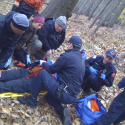
In a wilderness emergency, especially one in which you suspect that you may not be rescued within 72 hours, potable water can be critical to your survival. This is because by that point – perhaps even sooner depending upon certain factors like the weather, your level of physical exertion, and medical condition – your bodily functions begin to become impeded and your mental status impaired. So, while you may have the necessary equipment to filter and purify water, you have to first find it. Can you? Just in case you are uncertain, let me share with you a few ideas and tips to consider. Where to Look Here are a few suggestions on finding sources of water: Keep in mind the basic truism that water doesn’t flow uphill or run along the top of ridgelines, so you’ll have much better luck looking in low spots, like valleys and drainages. There, not only […]
Read more →
